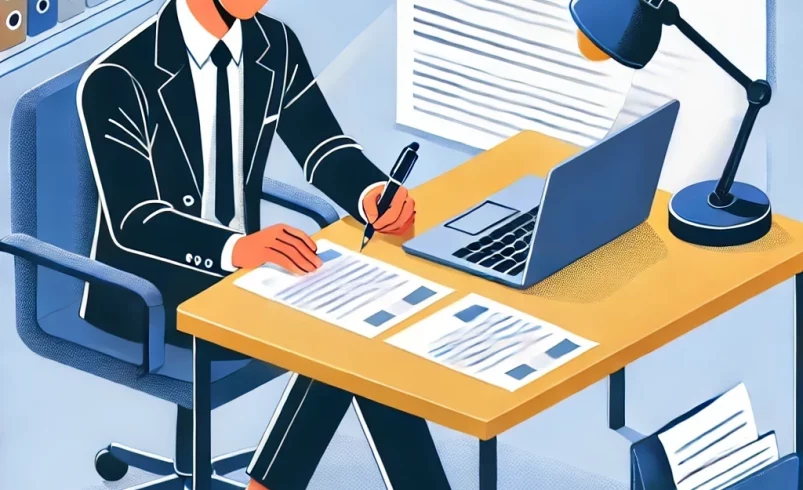
How to Structure a Grant Proposal
Grant structure depends on the grant request itself. It could be as simple as providing your mission statement and a handful of paragraphs about your programs and as complex as detailing what makes your program unique, why your leadership is qualified, what population you serve by percentage in certain zones, how you’ll conduct outreach, and more.
Here in Colorado, we have the Colorado Common Grant Application as a reference for what funders might ask and require. Some funders require that applicants use this form and process to apply, or they have a similar version of it in their online application portal. (Keep in mind that this form was last updated in 2010 and may be best used as a reference only. It is missing the key “needs statement” section and becoming less popular with funders.) Many funders have their own custom application with questions and requirements that help them narrow down the best organizations for their funding priorities and goals.
First and foremost, you want to follow the format the funder provides and answer their specific questions. However, if you’re writing a proposal from scratch or the funder hasn’t shared the application requirements just yet, we put together a common model for writing a grant in the order we would recommend.
While you work through this list, plug the information you gather into our grant essentials template.
Mission and History of the Organization
Most funders will ask for your mission and history. It’s important that your mission statement is accurate and effective. The most compelling mission statements are usually short and concise, around 20 words or less – and can even be less than 10 words. They get to the heart of what you do in one or two sentences. Your organization likely already has a mission statement in place, but it’s worth evaluating as a team.
The history, or background, of your organization is an important area to focus your energy. The most compelling histories aren’t just timelines, such as “John Smith created this organization in 1997.” They also detail the need the founder identified at the time, why they created the organization to address that need, and what changes have occurred over time.
If you’re a long-established organization, has the need changed and evolved? How is the organization keeping up with those changes?
If you’re a relatively new organization, why is your nonprofit needed and different – especially compared to similar organizations in the area?
Here, you can also detail sustainability and expectations for the future of the organization if these topics aren’t addressed elsewhere. Be sure to tie in why your nonprofit is needed today, which will segue nicely into the need statement section.
Need Statement
In the need statement, you’ll go into detail about the need for your services, why this need is an issue for the populations (or environments, species, special interests) you serve, what could be causing it, and the ripple effects it has in and beyond the community. This is where you’ll make the best use of your scholarly research. For example, if you’re opening a food pantry using a specific approach, share studies and surveys demonstrating why that approach is the most effective. You’ll then wrap up the need statement by describing how your work can help address this need or solve this problem, segueing into the program description.
In this section, avoid using “lack of” statements to explain why your services are needed. Describing what is lacking doesn’t get to the true need. For example, instead of saying a housing program is needed because of “a lack of affordable housing in the area,” we at L Pro use our scholarly research to explain the ripple effect that happens when people don’t have affordable housing: how it impacts mental and physical health, and how it gets harder to find housing the longer one is homeless.
Program or Project Description
The program description section can address specific programming and/or the overall work the organization does, depending on the type of request (general operating, program, capital, etc.) and the funder’s specific requirements. Generally, you want to detail the services you provide and communicate the five Ws and H:
- Who: Who are you serving with this program? It’s helpful to provide relevant details about the populations you serve, such as demographics and socioeconomic status.
- When: What time frame does this program entail, or is it ongoing?
- Where: Where will the program take place or what area/region will it impact?
- What: What services, goods, support, etc. will you provide as part of this program?
- Why: Why is this program needed, and why is this the appropriate approach to that need?
- How: How will you deliver this program and how will you make the focus population aware of it?
Here, you want to give as many specifics as possible without overwhelming the funder. For instance, you don’t need to list specific hours of service if it’s not requested. You also don’t need to fully reiterate the need statement. Rather, you can summarize that need and tie it to your work.
Evaluation and Outcomes
In the evaluation section, you’ll outline the outputs and outcomes you expect to achieve with the help of this grant funding. This section is especially important to show the funder the measurable impact their grant funds will contribute to, and your commitment to responsibly measure that impact.
- Outputs: Quantitative results, such as how many people you’ll serve or how many events you will host.
- Outcomes: Qualitative results, such as survey results or theory of change and logic models. Outcomes demonstrate ways change has occurred and the impact you’ve had, which really grabs the funder’s attention.
You’ll use these projections when you report back to the funder during and/or after the grant period (if required). Remember: If you say you’re going to serve 500 people and 90 percent of them will say your service was satisfactory, make sure you know who’s going to track and compile those results for reporting purposes.
Budget(s)
In this section, you have an opportunity to explain how the funding will be spent, for what purpose and toward what objectives. You’ll want to provide the funder with information about your revenue and expenses, including your overall organization budget as well as the program budget (if applicable). It is often helpful to discuss pertinent line items.
Funders want to see that your program is sustainable and won’t be exclusively dependent on their funding. List other sources of revenue, either by percentage of your overall budget/program budget or by numbers. Consider listing other funders you’re approaching for this specific type of request.
Keep in mind: Many funders also want to see a solid track record demonstrating you’ve built up other forms of donations before they make a big investment, which could mean they won’t fund organizations that are less than three years old.
Attachments
Each funder will expect different attached documents to be included. However, you always want to include the following common attachments if possible:
- Budget: The budget attachment is more comprehensive and detailed than the budget narrative in the proposal. It’s typically laid out as a table with line items.
- IRS Letter of Determination: This letter shows you’re designated as a 501c3 charity and are able to receive funding. Sometimes funders prefer a letter dated within the last five years that shows you’re still an active charity in the area.
- Board of Directors List: This attachment lists all board members’ first and last names, roles on the board and community involvement/affiliations if possible, including job titles or positions, employers and organizations. Listing those affiliations can engage the attention of funders and help them connect with your organization. *It’s not recommended to add contact info, as this grant proposal can become public record.
Bonus: Download our grant proposal template at the top for a more comprehensive list of potential attachments.
Jump back to our Grant Writing Essentials Guide for more tips and best practices.
L Professional Writing is a professional grant writing agency in the Pikes Peak region. We have extensive grant writing expertise and knowledge of funders in our region and beyond. Contact us at contact@lprowriting.com for a one-hour fit call/consultation.




